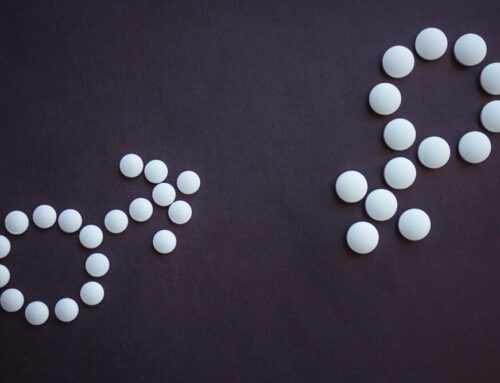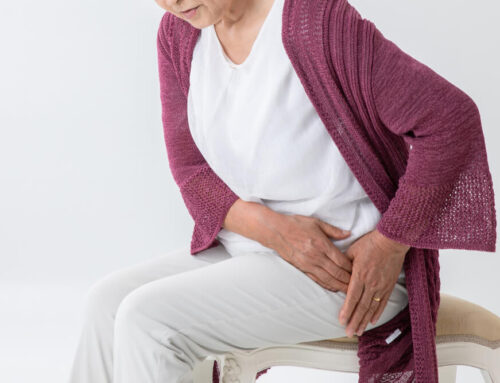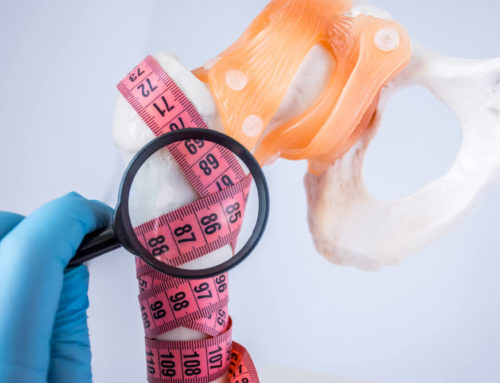Osteoporosis, also known as “porous bone,” is a disease that could affect anyone. As with any disease, there are, of course, certain risk factors; however, every single person is, more or less, at risk. Because of this, it’s extremely important to understand what osteoporosis actually is, is osteoporosis reversible, the treatment options, and the life expectancy with osteoporosis.
Osteoporosis is a disease that thins the framework inside bones to the point where even a minor bump can cause a fracture. There are, however, treatment options that can help manage this condition.
The Biggest Risk Factors
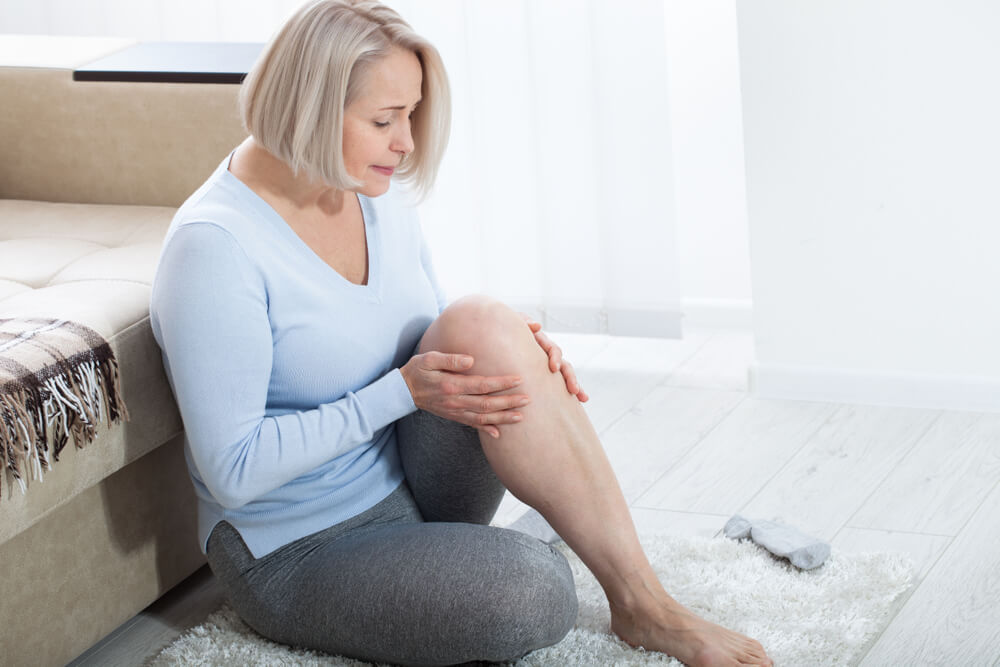
Osteoporosis mostly affects people over the age of 50, as that’s when the normal bone density starts to decrease. Of course, certain people might find out they’ve started to suffer from this disease way before; still, being over the age of 50 is one of the biggest risk factors for osteoporosis. This is because, until the age of 25, the normal bone density increases gradually, while at the ages between 25 and 50, it stays more or less stable. After the age of 50, due to the so-called bone aging and breakdown, normal bone density starts to decrease.
It needs to be said that women are more at risk of osteoporosis and osteopenia (low bone density that doesn’t yet meet the criteria to be treated as osteoporosis). This risk increases even further during menopause as the levels of estrogen drop.
Other risk factors include certain medical conditions, such as:
- Overactive thyroid
- Cancer
- Endometriosis
- Vitamin D deficiency
- Chronic lungs diseases
Other risk factors include overuse of alcohol, cigarette smoking, low intake of certain vitamins (particularly vitamin D), and long-term use of certain drugs, including anti-seizure drugs and corticosteroids.
How to Prevent Osteoporosis?
Maintaining bone mineral structure is the key factor to preventing osteoporosis. The following steps can help you with just that.
Up Your Calcium Intake
Always remember that calcium levels matter when it comes to preventing osteoporosis or at least slowing done the bone aging process. You should do your best to provide your body with enough calcium on a regular basis. On the other hand, do not exceed the recommended daily intake. You can either decide to focus on calcium-rich foods and snacks or just use supplements to meet your calcium needs in a faster way. Aim for the following daily calcium intake levels:
- Men under 70 and women under 50 – 1,000 milligrams of calcium daily
- Men over 70 and women over 50 – 1,200 milligrams daily
As mentioned, it’s a good idea to consume calcium-rich foods. These include, amongst many others:
- Low-fat milk and yogurt
- Greens
- Tofu
- Breakfast cereals
- Beans
- Orange juice
Don’t Forget Vitamin D
You should also get enough vitamin D because it helps with calcium absorption into your bones. It’s recommended to consume about 600 IU of vitamin D per day if you’re under the age of 70 and 800 IU of vitamin D per day if you’re over 70. Of course, some individuals may need to take more vitamin D, while others may need to lower the IU.
It’s not easy to get vitamin D purely from food, so it’s always suggested to use a high-quality vitamin D supplement.
Fit In Some Potassium and Protein
It’s a well-known fact that potassium improves calcium metabolism. Sadly, most adults do not meet the daily goal of consuming a minimum of 4,700 mg of potassium. You can find this mineral in fruits and vegetables; bananas, for example, are an incredibly rich source of potassium, as are raisins, spinach, and lima beans.
When it comes to protein, bones are basically just interlocked protein strands mixed in with calcium and other minerals. It should be obvious then why getting enough protein is so crucial for bone health.
Break the Bad Habits
You should definitely cut back on coffee, alcohol, and smoking. Drinking coffee and alcohol excessively may lead to reduced bone density and speed up bone aging, while smoking tobacco leads to bone loss and a longer healing time after a fracture.
How to Diagnose Osteoporosis?
Osteoporosis is often called a “silent disease.” In many cases, there are very little to no early warning signs that something is wrong with your bones. This is exactly why bone density tests are heavily recommended for all females aged 65 and over, as well as for all males aged 70 and over. You should also consider talking with your doctor if you have any risk factors and had a bone fracture when aged 50 or over. Family history of osteoporosis, taking medicines that can thin bones, or sudden back pains also make for potential osteoporosis risk factors.
The DEXA scan, or bone density test, is the primary method of diagnosing osteoporosis. The mineral density of your bones (BMD) is compared to the average BMD of an adult of your sex and race at the age of peak bone mass; the result is called a T score.
- A T score in the range of -1 to 1 means normal bone density
- A T score in the range of -1 to -2.5 indicates osteopenia
- A T score lower than -2.5 indicates osteoporosis
Is Osteoporosis Reversible?
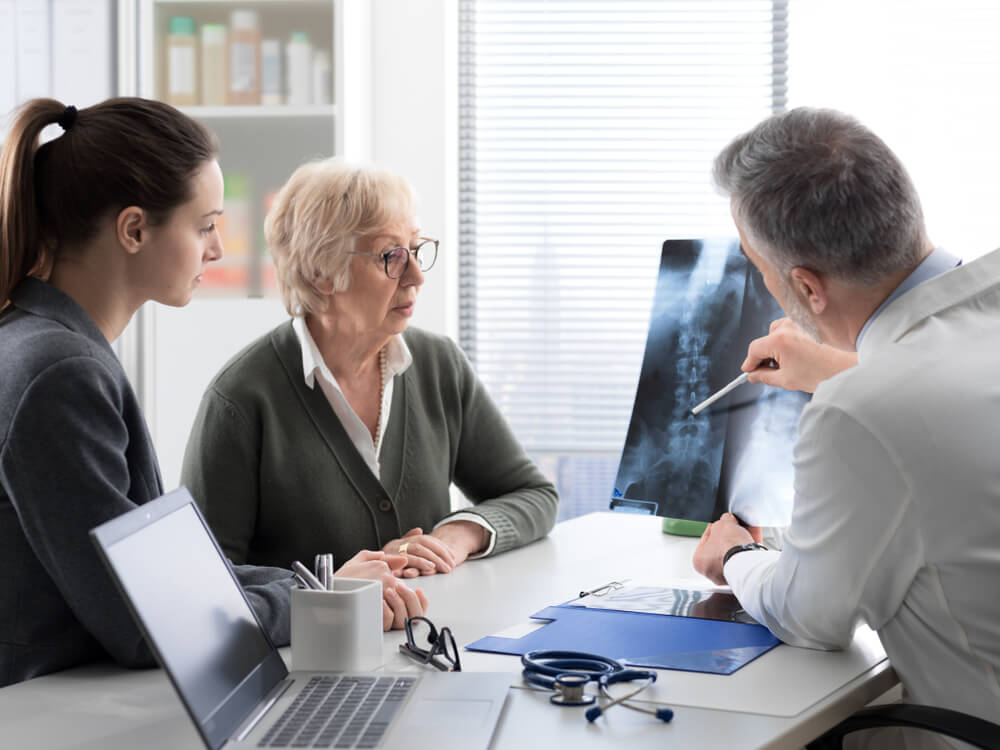
Unfortunately, osteoporosis isn’t reversible. There is, however, a variety of treatment options available, and the doctors will help you choose the right one for you. These treatments can significantly slow down bone aging and density loss.
Calcitonin treatment – calcitonin is a nose spray, and you will be using it once per day. It helps to reduce spinal fractures by ca. 25%.
Raloxifene treatment – raloxifene is available in pill form. Much like in the case of calcitonin, you will be taking one pill each day. Raloxifene reduces spinal fractures by about 30%.
Bisphosphonates treatment – depending on the doctors’ decision, you’ll be offered bisphosphonates as a once-a-day or once-a-month pill, or even as a once-a-year intravenous infusion. Bisphosphonates have a very high success ratio, reducing both spinal and hip fractures by 50% but also carry certain side effects, like heartburn or flu-like symptoms.
Denosumab treatment – denosumab will be given to you as an under-the-skin injection twice each year. It can reduce spinal and hip fractures by 50%, but has side effects such as rashes and eczema.
Parathyroid treatment – this is one of the most promising treatment options. It can reduce spine fractures by 65% and other types of fractures by 53%. There have been some controversies, as it was discovered that high doses of this drug could cause bone cancer in rats, but this has not been confirmed for humans.
Life Expectancy with Osteoporosis
While the majority of patients diagnosed with osteoporosis don’t actually die as a direct result of this particular disease, osteoporosis can contribute to more health issues. Currently, the average life expectancy with osteoporosis is 15 years in 75-year-old and younger women/60-year-old and younger men.
A comfortable lifestyle with osteoporosis is manageable and possible. All you have to do is listen to what your doctor tells you, do your best to live healthily to prevent the rapid progression of bone aging, and try to avoid stress and overworking as much as possible. It’s important to stay active and connected to people. It’s never too late (or early) to take your self-care more seriously, and Dr. TaiSenChoy-Bent can help you with that. Not only is she a renowned OBGYN specialist but also a professional anti-aging and wellness expert.



